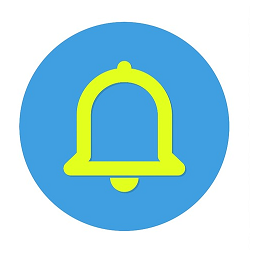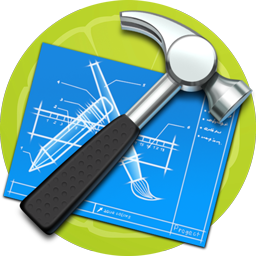
內容目錄
- 1 前言介紹
- 2 外掛協作開發者
- 3 外掛標籤
- 4 內容簡介
- 5 原文外掛簡介
- 5.1 2. Request methods
- 5.2 Method: get_recent_posts
- 5.3 Method: get_recent_posts_on_hub
- 5.4 Method: ideapress_server_ping
- 5.5 Method: get_post
- 5.6 Method: get_page
- 5.7 Method: get_date_posts
- 5.8 Method: get_category_posts
- 5.9 Method: get_tag_posts
- 5.10 Method: get_author_posts
- 5.11 Method: get_search_results
- 5.12 Method: get_date_index
- 5.13 Method: get_tag_index
- 5.14 Method: get_author_index
- 5.15 Method: get_page_index
- 5.16 Method: get_nonce
- 6 各版本下載點
- 7 延伸相關外掛(你可能也想知道)
前言介紹
- 這款 WordPress 外掛「IdeaPress – Turn WordPress into Mobile Apps (Android, iPhone, WinPhone)」是 2013-05-30 上架。
- 目前有 100 個安裝啟用數。
- 上一次更新是 2014-02-06,距離現在已有 4104 天。超過一年沒更新,安裝要確認版本是否可用。以及後續維護問題!
- 外掛最低要求 WordPress 2.8 以上版本才可以安裝。
- 有 3 人給過評分。
- 還沒有人在論壇上發問,可能目前使用數不多,還沒有什麼大問題。
外掛協作開發者
ideanotion | michaelsiu |
外掛標籤
ios | apps | mobile | android | Mobile App |
內容簡介
想要將 WordPress 網站轉換成 Android、iOS、Winphone 與 Windows app 嗎?試試看 IdeaPress 外掛,它支援 WordPress.com 和自託管網站,讓您可以輕鬆打造美觀應用程式!IdeaPress 讓製作行動應用程式更加容易,無論您是專業程式設計人員或是非技術人員都可以使用。此外,IdeaPress 獲得微軟加拿大的認可,並在全球各地的雜誌和 WordPress 商店中被廣泛使用。它還參展了 WordCamp 2013 DemoCamp、StartUpTO 和 DevTO 等展會。想把您的 WordPress 網站轉換成 iOS、Android 和 Winphone 應用程式,IdeaPress 絕對是您的好幫手。
透過 IdeaPress 外掛,您可以輕鬆將網站轉換成行動應用程式,並在三個簡單步驟中完成。透過 IdeaPress,您可以自由選擇應用程式的內容、設計和風格,並且我們會協助您上架應用程式商店。IdeaPress 具備多項功能,例如離線瀏覽、文章頁面、書籤、分享和搜尋功能。此外,您還可以在後台動態更新應用程式,讓使用者享受到即時更新的好處。
IdeaPress 外掛是由 Idea Notion 開發,基於 WordPress JSON-API 外掛進行修改,以符合 IdeaPress 多螢幕應用程序的需求。大部分方法都有支援,並新增了 get_recent_posts_on_hub 方法以利縮小回傳大小,但刪除了 Posts Control。有了 IdeaPress,讓您製作行動應用程式更加方便,詳細的說明文件可參考 JSON-API 外掛文件。
原文外掛簡介
IdeaPress convert your wordpress (both wordpress.com and self hosted site) into Android, iOS, winphone and windows app! It is used to compliment Ideapress multi-screen application.
About IdeaPress
IdeaPress aims to make the mobile app space more accessible to everyone by providing an avenue for coders and non-coders to develop beautiful apps.
IdeaPress has been endorsed by Microsoft CANADA and it is used by magazines and wordpress shop around the world. It has been showcase in WordCamp 2013 DemoCamp, StartUpTO, DevTO. If you want to turn your wordpress site into iOS, Android and WinPhone, it might be the tool for you.
Build your own mobile app
IdeaPress is an online that convert your site into moible app in 3 steps. WordPress is best known for its ease-of-use and customization options. When you’re making your iOS, Android and Winphone apps with IdeaPress, you get to choose exactly how you want to make your app ranging from the content that’s included to the design and styling. In addition, we will help you publish to app store.
Features
IdeaPress comes with loads of features out of the box
Offline Browsing
Tired of not being able to read your content you have no internet? Solve the problem with IdeaPress! IdeaPress stores the content of your website so that it can be accessed on mobile devices anytime, anywhere!
Posts and Pages
Choose which categories and pages you want to include in your apps and even choose different content for platforms, whether it be iOS, Android or Windows Phone. IdeaPress format your content to fit on all devices, so your posts and pages look good on the go!
Bookmarking, Sharing and Searching
One of the main reasons to get an app over a mobile website is to take advantage of device native features. IdeaPress apps can harness the power of the devices that they are on across all platforms and let users search the content of your website, share posts and pages and bookmark articles for later viewing.
Dynamic updating
While most apps have to be resubmitted to the store when updating, IdeaPress apps can be updated through your dashboard and have the changes pushed directly to the apps withing minutes without re-publishing. Users get to benefit from your changes almost instantly instead of waiting for store certification.
This plugin is developed by Idea Notion
This plugin is developed base on JSON-API, it will add additional functionality to the original JSON API, slim down the return objects and add additional functionality for Ideapress applications
Documentation
This plugin base on WordPress JSON-API plugin and we modified the plugin to taylor the need of Ideapress multi-screen application. Most of the methods are supported, an additional get_recent_posts_on_hub is being added for smaller return size and Posts Control is dropped. The rest of this section is base on JSON-API documentation.
General concepts
1.1. Requests
1.2. Controllers
1.3. Responses
Request methods
2.1. Core controller methods
2.2. Respond controller methods
Request arguments
3.1. Output-modifying arguments
3.2. Content-modifying arguments
3.3. Using include/exclude and redirects
Response objects
4.1. Post response object
4.2. Category response object
4.3. Tag response object
4.4. Author response object
4.4. Comment response object
4.5. Attachment response object
1. General Concepts
1.1. Requests
Requests use a simple REST-style HTTP GET or POST. To invoke the API, include a non-empty query value for json in the URL.
JSON API operates in two modes:
Implicit mode is triggered by setting the json query var to a non-empty value on any WordPress page. The content that would normally appear on that page is returned in JSON format.
Explicit mode is triggered by setting json to a known method string. See Section 2: Request methods for a complete method listing.
Implicit mode examples:
http://www.example.org/?json=1
http://www.example.org/?p=47&json=1
http://www.example.org/tag/banana/?json=1
Explicit mode examples:
http://www.example.org/?json=get_recent_posts
http://www.example.org/?json=get_post&post_id=47
http://www.example.org/?json=get_tag_posts&tag_slug=banana
With user-friendly permalinks configured:
http://www.example.org/api/get_recent_posts/
http://www.example.org/api/get_post/?post_id=47
http://www.example.org/api/get_tag_posts/?tag_slug=banana
Further reading
See Section 3: Request arguments for more information about request arguments to modify the response.
1.2. Controllers
The 1.0 release of JSON API introduced a modular controller system. This allows developers to flexibly add features to the API and give users more control over which methods they have enabled.
The Core controller
Most of the methods available prior to version 1.0 have been moved to the Core controller. The two exceptions are submit_comment and create_post which are now available from the Respond and Posts controllers, respectively. The Core controller is the only one enabled by default. All other functionality must be enabled from the JSON API Settings page (under Settings in the WordPress admin menu).
Specifying a controller
There are a few ways of specifying a controller, depending on how you are calling the API:
http://www.example.org/?json=get_recent_posts (core controller is implied, method is get_recent_posts)
http://www.example.org/api/info/ (core controller is implied)
http://www.example.org/api/core/get_category_posts/ (core controller can also be explicitly specified)
http://www.example.org/?json=respond.submit_comment (respond controller, submit_comment method)
Legacy compatibility
JSON API retains support for its pre-1.0 methods. For example, if you invoke the method create_post without a controller specified, the Posts controller is chosen instead of Core.
Available controllers
The current release includes three controllers: Core, Posts, and Respond. Developers are encouraged to suggest or submit additional controllers.
Further reading
See Section 2: Request methods for a complete reference of available controllers and methods. For documentation on extending JSON API with new controllers see Section 5.2: Developing JSON API controllers.
1.3. Responses
The standard response format for JSON API is (as you may have guessed) JSON.
Here is an example response from http://localhost/wordpress/?json=1 called on a default WordPress installation (formatted for readability):
{
"status": "ok",
"count": 1,
"count_total": 1,
"pages": 1,
"posts": [
{
"id": 1,
"type": "post",
"slug": "hello-world",
"url": "http:\/\/localhost\/wordpress\/?p=1",
"title": "Hello world!",
"title_plain": "Hello world!",
"content": "
Welcome to WordPress. This is your first post. Edit or delete it, then start blogging!\n",
"excerpt": "Welcome to WordPress. This is your first post. Edit or delete it, then start blogging!\n",
"date": "2009-11-11 12:50:19",
"modified": "2009-11-11 12:50:19",
"categories": [],
"tags": [],
"author": {
"id": 1,
"slug": "admin",
"name": "admin",
"first_name": "",
"last_name": "",
"nickname": "",
"url": "",
"description": ""
},
"comments": [
{
"id": 1,
"name": "Mr WordPress",
"url": "http:\/\/wordpress.org\/",
"date": "2009-11-11 12:50:19",
"content": "
Hi, this is a comment.
To delete a comment, just log in and view the post's comments. There you will have the option to edit or delete them.\n",
"parent": 0
}
],
"comment_count": 1,
"comment_status": "open"
}
]
}
2. Request methods
Request methods are available from the following controllers:
Core controller – basic introspection methods
Posts controller – data manipulation methods for posts
Respond controller – comment/trackback submission methods
2.1. Core controller methods
The Core controller offers a mostly-complete set of introspection methods for retrieving content from WordPress.
Method: info
Returns information about JSON API.
Optional arguments
controller – returns detailed information about a specific controller
Response
{
"status": "ok",
"json_api_version": "1.0",
"controllers": [
"core"
]
}
Response
{
"status": "ok",
"name": "Core",
"description": "Basic introspection methods",
"methods": [
...
]
}
Method: get_recent_posts
Returns an array of recent posts. You can invoke this from the WordPress home page either by setting json to a non-empty value (i.e., json=1) or from any page by setting json=get_recent_posts.
Optional arguments
count – determines how many posts per page are returned (default value is 10)
page – return a specific page number from the results
post_type – used to retrieve custom post types
Response
{
"status": "ok",
"count": 10,
"count_total": 79,
"pages": 7,
"posts": [
{ ... },
{ ... },
...
]
}
Method: get_recent_posts_on_hub
Returns an array of recent posts. You can invoke this from any page by setting json=get_recent_posts_on_hub. This function slims down the content because on hub page, multi-screen app doesn’t need the full content and it remove the return comments to decrease the size of return item.
Optional arguments
count – determines how many posts per page are returned (default value is 10)
page – return a specific page number from the results
post_type – used to retrieve custom post types
Response
{
"status": "ok",
"count": 10,
"count_total": 79,
"pages": 7,
"posts": [
{ ... },
{ ... },
...
]
}
Method: ideapress_server_ping
Returns true. Make sure the the server has installed the plugin
Response
{
"status": "ok",
"result": true
}
Method: get_post
Returns a single post object.
One of the following is required
Invoking the JSON API implicitly (i.e., ?json=1) on a post URL
id or post_id – set to the post’s ID
slug or post_slug – set to the post’s URL slug
Optional arguments
post_type – used to retrieve custom post types
Response
{
"status": "ok",
"post": { ... }
}
Method: get_page
Returns a single page object.
One of the following is required
Invoking the JSON API implicitly (i.e., ?json=1) on a page URL
id or page_id – set to the page’s ID
slug or page_slug – set to the page’s URL slug
Optional arguments
children – set to a non-empty value to include a recursive hierarchy of child pages
post_type – used to retrieve custom post types
Response
{
"status": "ok",
"page": { ... }
}
Method: get_date_posts
Returns an array of posts/pages in a specific date archive (by day, month, or year).
One of the following is required
Invoking the JSON API implicitly (i.e., ?json=1) on a date archive page
date – set to a date in the format YYYY or YYYY-MM or YYYY-MM-DD (non-numeric characters are stripped from the var, so YYYYMMDD or YYYY/MM/DD are also valid)
Optional arguments
count – determines how many posts per page are returned (default value is 10)
page – return a specific page number from the results
post_type – used to retrieve custom post types
Response
{
"status": "ok",
"count": 10,
"count_total": 79,
"pages": 7,
"posts": [
{ ... },
{ ... },
...
]
}
Method: get_category_posts
Returns an array of posts/pages in a specific category.
One of the following is required
Invoking the JSON API implicitly (i.e., ?json=1) on a category archive page
id or category_id – set to the category’s ID
slug or category_slug – set to the category’s URL slug
Optional arguments
count – determines how many posts per page are returned (default value is 10)
page – return a specific page number from the results
post_type – used to retrieve custom post types
Response
{
"status": "ok",
"count": 10,
"count_total": 79,
"pages": 7,
"category": { ... }
"posts": [
{ ... },
{ ... },
...
]
}
Method: get_tag_posts
Returns an array of posts/pages with a specific tag.
One of the following is required
Invoking the JSON API implicitly (i.e., ?json=1) on a tag archive page
id or tag_id – set to the tag’s ID
slug or tag_slug – set to the tag’s URL slug
Optional arguments
count – determines how many posts per page are returned (default value is 10)
page – return a specific page number from the results
post_type – used to retrieve custom post types
Response
{
"status": "ok",
"count": 10,
"count_total": 79,
"pages": 7,
"tag": { ... }
"posts": [
{ ... },
{ ... },
...
]
}
Returns an array of posts/pages written by a specific author.
One of the following is required
Invoking the JSON API implicitly (i.e., ?json=1) on an author archive page
id or author_id – set to the author’s ID
slug or author_slug – set to the author’s URL slug
Optional arguments
count – determines how many posts per page are returned (default value is 10)
page – return a specific page number from the results
post_type – used to retrieve custom post types
Response
{
"status": "ok",
"count": 10,
"count_total": 79,
"pages": 7,
"author": { ... }
"posts": [
{ ... },
{ ... },
...
]
}
Method: get_search_results
Returns an array of posts/pages in response to a search query.
One of the following is required
Invoking the JSON API implicitly (i.e., ?json=1) on a search results page
search – set to the desired search query
Optional arguments
count – determines how many posts per page are returned (default value is 10)
page – return a specific page number from the results
post_type – used to retrieve custom post types
Response
{
"status": "ok",
"count": 10,
"count_total": 79,
"pages": 7,
"posts": [
{ ... },
{ ... },
...
]
}
Method: get_date_index
Returns both an array of date page permalinks and a tree structure representation of the archive.
Response
{
"status": "ok",
"permalinks": [
"...",
"...",
"..."
],
"tree": {
"2009": {
"09": 17,
"10": 20,
"11": 7
}
}
Note: the tree is arranged by response.tree.[year].[month].[number of posts].
Method: get_category_index
Returns an array of active categories.
Response
{
"status": "ok",
"count": 3,
"categories": [
{ ... },
{ ... },
{ ... }
]
}
Method: get_tag_index
Returns an array of active tags.
Response
{
"status": "ok",
"count": 3
"tags": [
{ ... },
{ ... },
{ ... }
]
}
Returns an array of active blog authors.
Response
{
"status": "ok",
"count": 3,
"authors": [
{ ... },
{ ... },
{ ... }
]
}
Method: get_page_index
Returns a hierarchical tree of page posts.
Response
{
"status": "ok",
"pages": [
{ ... },
{ ... },
{ ... }
]
}
Method: get_nonce
Returns a WordPress nonce value, required to call some data manipulation methods.
Required arguments
controller – the JSON API controller for the method you will use the nonce for
method – the method you wish to call (currently create_post is the only method that requires a nonce)
Response
{
"status": "ok",
"controller": "posts",
"method": "create_post",
"nonce": "cefe01efd4"
}
Further reading
To learn more about how nonces are used in WordPress, see Mark Jaquith’s article on the subject.
2.2. Pages controller methods
Method: create_post
Creates a new post.
Required argument
nonce – available from the get_nonce method (call with vars controller=posts and method=create_post)
Optional arguments
status – sets the post status (“draft” or “publish”), default is “draft”
title – the post title
content – the post content
author – the post’s author (login name), default is the current logged in user
categories – a comma-separated list of categories (URL slugs)
tags – a comma-separated list of tags (URL slugs)
Note: including a file upload field called attachment will cause an attachment to be stored with your new post.
2.3. Respond controller methods
Method: submit_comment
Submits a comment to a WordPress post.
Required arguments
post_id – which post to comment on
name – the commenter’s name
email – the commenter’s email address
content – the comment content
Optional arguments
redirect – redirect instead of returning a JSON object
redirect_ok – redirect to a specific URL when the status value is ok
redirect_error – redirect to a specific URL when the status value is error
redirect_pending – redirect to a specific URL when the status value is pending
Custom status values
pending – assigned if the comment submission is pending moderation
3. Request arguments
API requests can be controlled by specifying one of the following arguments as URL query vars.
Examples
Debug the response: http://www.example.org/api/get_page_index/?dev=1
Widget-style JSONP output: http://www.example.org/api/get_recent_posts/?callback=show_posts_widget&read_more=More&count=3
Redirect on error: http://www.example.org/api/posts/create_post/?callback_error=http%3A%2F%2Fwww.example.org%2Fhelp.html
3.1. Output-modifying arguments
The following arguments modify how you get results back from the API. The redirect response styles are intended for use with the data manipulation methods.
Setting callback to a JavaScript function name will trigger a JSONP-style callback.
Setting redirect to a URL will cause the user’s browser to redirect to the specified URL with a status value appended to the query vars (see the Response objects section below for an explanation of status values).
Setting redirect_[status] allows you to control the resulting browser redirection depending on the status value.
Setting dev to a non-empty value adds whitespace for readability and responds with text/plain
Omitting all of the above arguments will result in a standard JSON response.
3.2. Content-modifying arguments
These arguments are available to modify all introspection methods:
date_format – Changes the format of date values. Uses the same syntax as PHP’s date() function. Default value is Y-m-d H:i:s.
read_more – Changes the ‘read more’ link text in post content.
include – Specifies which post data fields to include. Expects a comma-separated list of post fields. Leaving this empty includes all fields.
exclude – Specifies which post data fields to exclude. Expects a comma-separated list of post fields.
custom_fields – Includes values from posts’ Custom Fields. Expects a comma-separated list of custom field keys.
author_meta – Includes additional author metadata. Should be a comma-separated list of metadata fields.
count – Controls the number of posts to include (defaults to the number specified by WordPress)
order – Controls the order of post results (‘DESC’ or ‘ASC’). Default value is ‘DESC’.
order_by – Controls which field to order results by. Expects one of the following values:
author
date (default value)
title
modified
menu_order (only works with Pages)
parent
ID
rand
meta_value (meta_key must also be set)
none
comment_count
meta_key, meta_value, meta_compare – Retrieve posts (or Pages) based on a custom field key or value.
3.3. Using include/exclude and redirects
About include/exclude arguments
By default you get all values included with each post object. Specify a list of include values will cause the post object to filter out the values absent from the list. Specifying exclude causes post objects to include all values except the fields you list. For example, the query exclude=comments includes everything except the comments.
About the redirect argument
The redirect response style is useful for when you need the user’s browser to make a request directly rather than making proxy requests using a tool like cURL. Setting a redirect argument causes the user’s browser to redirect back to the specified URL instead of returning a JSON object. The resulting status value is included as an extra query variable.
For example calling an API method with redirect set to http://www.example.com/foo will result in a redirection to one of the following:
http://www.example.com/foo?status=ok
http://www.example.com/foo?status=error
You can also set separate URLs to handle status values differently. You could set redirect_ok to http://www.example.com/handle_ok and redirect_error to http://www.example.com/handle_error in order to have more fine-tuned control over the method result.
4. Response objects
This section describes data objects you can retrieve from WordPress and the optional URL redirects.
Status values
All JSON API requests result in a status value. The two basic status values are ok and error. Additional status values are available for certain methods (such as pending in the case of the submit_comment method). API methods that result in custom status values include a custom status values section in their documentation.
Naming compatibility
Developers familiar with WordPress may notice that many names for properties and arguments have been changed. This was a stylistic choice that intends to provide more clarity and consistency in the interface.
4.1. Post response object
id – Integer
type – String (e.g., post or page)
slug – String
url – String
title – String
title_plain – String
content – String (modified by the read_more argument)
excerpt – String
date – String (modified by the date_format argument)
modified – String (modified by the date_format argument)
categories – Array of category objects
tags – Array of tag objects
author Author object
comments – Array of comment objects
attachments – Array of attachment objects
comment_count – Integer
comment_status – String ("open" or "closed")
thumbnail – String (only included if a post thumbnail has been specified)
custom_fields – Object (included by setting the custom_fields argument to a comma-separated list of custom field names)
Note
The thumbnail attribute returns a URL to the image size specified by the optional thumbnail_size request argument. By default this will use the thumbnail or post-thumbnail sizes, depending on your version of WordPress. See Mark Jaquith’s post on the topic for more information.
4.2. Category response object
id – Integer
slug – String
title – String
description – String
parent – Integer
post_count – Integer
4.3. Tag response object
id – Integer
slug – String
title – String
description – String
post_count – Integer
4.4. Author response object
id – Integer
slug – String
name – String
first_name – String
last_name – String
nickname – String
url – String
description – String
Note: You can include additional values by setting the author_meta argument to a comma-separated list of metadata fields.
4.5. Comment response object
id – Integer
name – String
url – String
date – String
content – String
parent – Integer
author – Object (only set if the comment author was registered & logged in)
4.6. Attachment response object
id – Integer
url – String
slug – String
title – String
description – String
caption – String
parent – Integer
mime_type – String
images – Object with values including thumbnail, medium, large, full, each of which are objects with values url, width and height (only set if the attachment is an image)
各版本下載點
- 方法一:點下方版本號的連結下載 ZIP 檔案後,登入網站後台左側選單「外掛」的「安裝外掛」,然後選擇上方的「上傳外掛」,把下載回去的 ZIP 外掛打包檔案上傳上去安裝與啟用。
- 方法二:透過「安裝外掛」的畫面右方搜尋功能,搜尋外掛名稱「IdeaPress – Turn WordPress into Mobile Apps (Android, iPhone, WinPhone)」來進行安裝。
(建議使用方法二,確保安裝的版本符合當前運作的 WordPress 環境。
延伸相關外掛(你可能也想知道)
 WPMobile.App 》WPMobile.App 可以建立您的 WordPress 網站的 Android 和 iPhone-iPad 原生行動應用程式,並允許您在 Google Play 和 App Store 上發布它。, 我們的 Android ...。
WPMobile.App 》WPMobile.App 可以建立您的 WordPress 網站的 Android 和 iPhone-iPad 原生行動應用程式,並允許您在 Google Play 和 App Store 上發布它。, 我們的 Android ...。 Community by PeepSo – Download from PeepSo.com 》PeepSo 是一個超輕且免費的社交網絡外掛程式,可以讓你快速及輕鬆地在 WordPress 網站內建立社交網絡或線上社群。PeepSo 非常高效和易用,類似於 Facebook 的...。
Community by PeepSo – Download from PeepSo.com 》PeepSo 是一個超輕且免費的社交網絡外掛程式,可以讓你快速及輕鬆地在 WordPress 網站內建立社交網絡或線上社群。PeepSo 非常高效和易用,類似於 Facebook 的...。 AppPresser – Mobile App Framework 》AppPresser 可協助網站建立者簡單又快速地將 WordPress 網站製作成 iOS/Android 行動應用程式。, AppPresser 可讓您使用 WordPress 網站作為應用程式,包括存...。
AppPresser – Mobile App Framework 》AppPresser 可協助網站建立者簡單又快速地將 WordPress 網站製作成 iOS/Android 行動應用程式。, AppPresser 可讓您使用 WordPress 網站作為應用程式,包括存...。 REST API Helper 》此外掛可協助 REST API 顯示精選媒體來源、作者、類別和自訂欄位。, 此外掛是為Ionic Mobile App Builder製作的,適用於 Ionic 框架。, 此外掛還支援在 metab...。
REST API Helper 》此外掛可協助 REST API 顯示精選媒體來源、作者、類別和自訂欄位。, 此外掛是為Ionic Mobile App Builder製作的,適用於 Ionic 框架。, 此外掛還支援在 metab...。 Androapp – Native Android mobile app for wordpress site 》AndroApp 是一個為 Android 平台開發的原生手機應用程式,能夠在幾分鐘內為您的 WordPress 博客創建一個漂亮的手機應用程式,不需要任何編程知識。, , 只需幾...。
Androapp – Native Android mobile app for wordpress site 》AndroApp 是一個為 Android 平台開發的原生手機應用程式,能夠在幾分鐘內為您的 WordPress 博客創建一個漂亮的手機應用程式,不需要任何編程知識。, , 只需幾...。MobiLoud – WordPress Mobile Apps – Convert your WordPress Website to Native Mobile Apps 》MobiLoud 是一款外掛,可讓使用者將 WordPress 網站轉換為 iOS 和 Android 手機和平板電腦的高質量應用程式,並發布至 App Store 和 Google Play 市場。, 請...。
WP-AppKit – Mobile apps and PWA for WordPress 》重要提示 ✋:自 1.5.3 版本開始,我們不再支援原生 iOS app。這是一個艱難的選擇,請在此處了解更多。, 具有漸進式 Web App(PWA)支援:1.5x 版本的釋出已...。
 Push Notification for Post and BuddyPress 》p>此外掛使用 Firebase Cloud Messaging (FCM) 從網站、Android/iOS 行動應用程式中傳送推播通知。此外掛具有 REST API 功能,可與原生/混合 Android/iOS 行...。
Push Notification for Post and BuddyPress 》p>此外掛使用 Firebase Cloud Messaging (FCM) 從網站、Android/iOS 行動應用程式中傳送推播通知。此外掛具有 REST API 功能,可與原生/混合 Android/iOS 行...。MobiLoud – Smart App Banners 》我們開發了這個外掛,讓你可以在 WordPress 網站上使用智能應用程式橫幅,以增加 iOS 和 Android 應用程式的下載量。只有使用行動裝置瀏覽你的網站時,智能應...。
Mobile App Canvas – Convert your Website Into an App for iOS and Android 》MobiLoud 的 Mobile App Canvas 解決方案可將任何 WordPress 網站輕鬆轉換為原生移動應用,並為您發布到 App Store 和 Google Play。, 使用 MobiLoud,我們可...。
 Appmaker WP – Convert WordPress to Native Android & iOS App 》Appmaker WP 可以幫助您在幾分鐘內將 WordPress 新聞網站或 WP 雜誌轉換為本機 iOS 和 Android 移動應用程序。您只需要安裝 Appmaker 的 WordPress 移動應用...。
Appmaker WP – Convert WordPress to Native Android & iOS App 》Appmaker WP 可以幫助您在幾分鐘內將 WordPress 新聞網站或 WP 雜誌轉換為本機 iOS 和 Android 移動應用程序。您只需要安裝 Appmaker 的 WordPress 移動應用...。Add Smart App Banner 》這個外掛程式會在網站頂部增加一個安裝手機應用程式的按鈕。, 支援 Android 和 Windows。, Smart Banners 是移動裝置的一個新特色,可以從網站推廣應用程式在...。
 APPExperts – Mobile App Builder for WordPress | WooCommerce to iOS and Android Apps 》APPExperts 是一個免費和高級混合使用的行動應用程式建構工具,可讓你將支援 WordPress 的網站轉換成適用於 iOS 和 Android 手機、平板電腦和其他行動裝置的...。
APPExperts – Mobile App Builder for WordPress | WooCommerce to iOS and Android Apps 》APPExperts 是一個免費和高級混合使用的行動應用程式建構工具,可讓你將支援 WordPress 的網站轉換成適用於 iOS 和 Android 手機、平板電腦和其他行動裝置的...。 WPSSO Mobile App Meta Tags 》, Apple Store / iTunes 和 Google Play App 的元標籤。, 透過在 Apple 的行動版 Safari 中使用橫幅廣告來推廣您網站的行動應用程式。, 在行動應用程式產品頁...。
WPSSO Mobile App Meta Tags 》, Apple Store / iTunes 和 Google Play App 的元標籤。, 透過在 Apple 的行動版 Safari 中使用橫幅廣告來推廣您網站的行動應用程式。, 在行動應用程式產品頁...。 Mobile App Editor – WordPress to Android App Builder 》本外掛為 WordPress 和 WooCommerce 的本地 Android 應用程序生成器。在 WordPress 控制台內建立您的本地移動應用程序,無需聘請移動應用程序開發人員。從您...。
Mobile App Editor – WordPress to Android App Builder 》本外掛為 WordPress 和 WooCommerce 的本地 Android 應用程序生成器。在 WordPress 控制台內建立您的本地移動應用程序,無需聘請移動應用程序開發人員。從您...。
